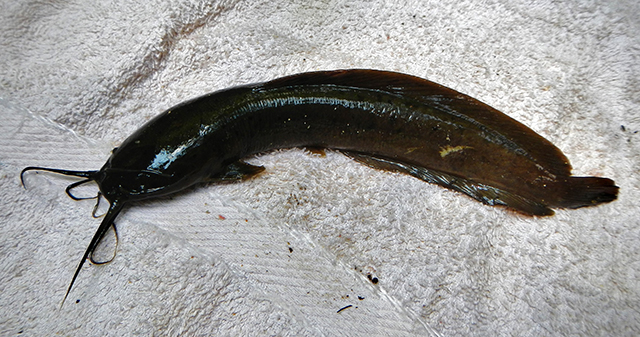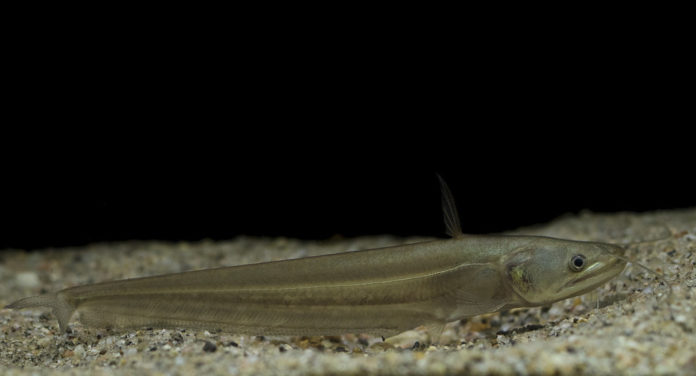Order Siluriformes
Catfish (Order Siluriformes) are various gatherings of bony fish. Named for their conspicuous barbels, which take after a feline’s hairs, catfish go in size and conduct from the heaviest, the Mekong giant catfish from Southeast Asia and the longest, the wels catfish of Europe, to detritivores (species that eat dead material on the base), and even to a little parasitic species usually called the candiru, Vandellia cirrhosa. There are shield plated types and furthermore exposed sorts, neither having scales. Notwithstanding their normal name, not all catfish have noticeable barbels; what characterizes a fish as being in the order Siluriformes are in reality certain highlights of the skull and swimbladder. Catfish are of impressive business significance; a large number of the bigger species are farmed or looks for food.
Sri Lanka is home to some of the amazing catfish species found around the world. mainly there are four main types of catfish found in this island.
- Naked catfishes | Order: Siluriformes. Family: Bagridae
- Sheat catfishes |Family: Siluridae
- Airbreathing catfishes |Family: Clariidae
- Airsac catfishes | Family: Heteropneustidae
Naked catfishes | Order: Siluriformes. Family: Bagridae
Mystus nanus
previously knowns as Mystus vittatus but according to recent research programs, this species was separated from other naked catfish species. Mystus nanus, new species, is portrayed from marsh streams, waterways, and repositories all through Sri Lanka. Recently misidentified in Sri Lanka as M. vittatus, the new species is recognized from its Indian and Sri Lankan congeners by having two cream stripes along the flanks, a dark hypural smudge, the distal edge of the dorsal fin adjusted, eye diameter 19-22 % head length, adipose-fin base length 25.3-31.4 % standard length, and the back cranial fontanelle finishing about an eye-measurement front to the base of the supraoccipital procedure.
Introduction to Catfish in Sri Lanka | Mystus zeylanicus | reference
Sudasingheetal_2016_Mystusnanus_newspecies_lankaMystus gulio


Mystus gulio, the Long Whiskers Catfish, is a species of catfish of the family Bagridae. The conventional name is most likely gotten from the Latin “mystax”, signifying “mustache”, because of the long barbels.
It is found in India, Sri Lanka, Pakistan, Nepal, and Vietnam. It is essentially a brackish fish that enters and lives in new water.
The populace is known to be diminishing in the late past, because of getting, pet exchanging, and living space pulverization.
Mystus ankutta
Mystus ankutta, new species, is depicted from the lower compasses of streams depleting the south-western quarter of Sri Lanka. It is recognized from all Peninsular Indian and Sri Lankan congeners by the blend of the accompanying characters: adipose fin height 6.5-7.5 % SL; adipose fin initiating promptly back to dorsal-fin base; stripes and stamps missing on body aside from a diffuse humeral smudge and a dull, sub-triangular hypural smear; eye diameter 18-23 % HL; the profundity of caudal peduncle 10.1-12.3 % SL; and length of caudal-fin upper flap 27.6-32.2 % SL.
Introduction to Catfish in Sri Lanka | mystus ankutta reference
Mystus_ankutta_a_new_catfish_from_Sri_Lanka_TeleosMystus zeylanicus
Mystus zeylanicus, new species, is depicted from marsh streams and reservoirs of Sri Lanka. It varies from most South Asian congeners in having a since a long time ago based adipose fin, and contrasts from those having a comparative molded adipose fin by mensural characters of the eye, head, dorsal-fin spine, body profundity, and caudal-peduncle profundity, just as its consistently dim shading design.
Introduction to Catfish in Sri Lanka | Mystus zeylanicus reference
Mystus zeylanicus, a new species of bagrid catfish from Sri Lanka (Teleostei: Bagridae)
Airbreathing catfishes |Family: Clariidae
Clarias brachysoma | Magura
A popular fish in Sri Lanka and commonly known as “Magura”. Very similar to the Sting Catfish, the main difference between these two is having elongated dorsal fin for Sri Lankan Walking Catfish Clarias brachysoma unlike Heteropneustes fossilis . There are four pairs of barbels near the mouth. They are mainly brown in colour, but it can be changed from dark blackish-grey to light brownish yellow. Usually grows up to about 40cm SL. A carnivorous fish that feeds on small fish, shrimps, frogs, worms and tadpoles. A nocturnal fish species. Clarias brachysoma is a widely distributed species throughout Sri Lanka. They usually live in rivers, lakes, ponds and streams with a muddy substrate. They are bottom Common but an endemic fish to Sri Lanka.


Airsac catfishes | Family: Heteropneustidae
Heteropneustes fossilis | hunga
The Asian stinging catfish or fossil feline, Heteropneustes fossilis, is a type of air sac catfish found in India, Bangladesh, Pakistan, Nepal, Sri Lanka, Thailand, Myanmar, and Bhutan. In Sri Lanka, this fish is called hunga (හුංඟා) in Sri lanka
H. fossilis is found fundamentally in lakes, trench, bogs, and swamps, yet at times happens in sloppy waterways. It can endure slightly brackish water. It is omnivorous. This species breeds in confined waters during the storm months, however, it can raise in lakes, neglected lakes, and trench when adequate water collects. It is in extraordinary interest because of its restorative value.
The stinging catfish can convey an excruciating sting to people. Toxin from an organ on its pectoral fin spine has been known to be very agonizing.
This species develops to a length of 30 cm (12 in) TL and is a significant segment of nearby business fisheries. It is additionally cultivated and found in the aquarium trade.
/siluriformes/heteropneustidae/heteropneustes/fossilis/1.jpg)
/siluriformes/heteropneustidae/heteropneustes/fossilis/1.jpg)
Sheat catfishes |Family: Siluridae
Wallago attu
Wallago attu is a freshwater catfish of the family Siluridae, local to South and Southeast Asia. It is usually known as helicopter catfish or wallago catfish. Some provincial assignments, for example, the Indian Sareng, the Bengal Boal, the Sylheti Gual, or the Malaysian and Indonesian Tapah are likewise infrequently utilized in English. W. attu is found in large streams and lakes in two geographically disconnected regions (disjunct dispersion), with one populace living over a significant part of the Indian Subcontinent and the other in parts of Southeast Asia. The species can arrive at an all-out length of 1 m (3 ft 3 in).
It imparts portions of its local range to the remotely comparable, yet a lot bigger Wallagonia leerii, and is in this manner frequently mistaken for it.
This catfish is one of the fish species that has been utilized as food in Southeast Asia since ancient times.
Ompak argestes
The catfish family Ompok La Cepède, 1803, comprises of medium-sized silurid angles found in inland waters all through South and Southeast Asia. The class is customarily analyzed by the nearness of a short dorsal fin with 4 beams, unequivocally forked caudal fin, the subcutaneous eye that is set quickly back to the mouth rictus, and two patches of palatal teeth. Guys are progressively slim and have solid serrations on the back edge of the pectoral ridge
null
null
Ompok cylonensis
Ompok argestes, another species of silurid catfish, is portrayed from the southwestern marshes of Sri Lanka. The new species are recognized from every other specie of Ompok in the Indian subcontinent by a blend of the accompanying characters: body shading design mottled; predorsal profile consistently arched; maxillary barbels reach or broaden the somewhat past base of dorsal fin; eye measurement 14.2-17.1% head length (HL); body profundity at base 19.8-22.3% standard length (SL); head width 14.3-16.8% SL; caudal peduncle profundity 5.6-6.5% SL. Callichrous ceylonensis Günther is demonstrated to be a legitimate species that is clearly limited to Sri Lanka, recognized by a blend of the accompanying characters: unmistakable concavity in predorsal profile; the beginning of pelvic fin underneath or marginally back to the birthplace of the dorsal fin; maxillary barbels 108-166 % HL; mandibular barbels 16.1-33.7 % HL; and 58-66 butt-centric fin beams.
Introduction to Catfish in Sri Lanka full article reference
https://www.researchgate.net/





